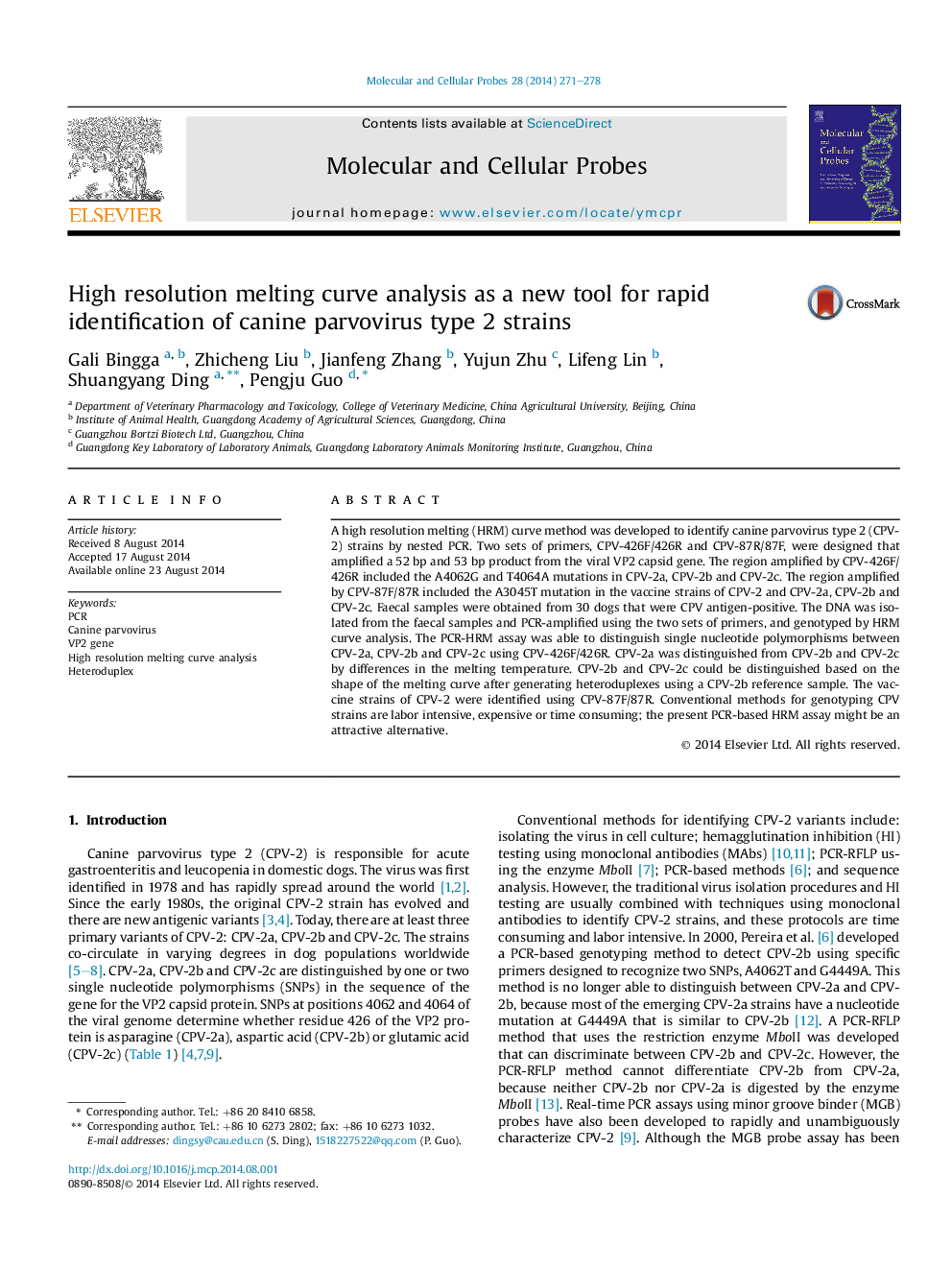| Article ID | Journal | Published Year | Pages | File Type |
|---|---|---|---|---|
| 2199607 | Molecular and Cellular Probes | 2014 | 8 Pages |
A high resolution melting (HRM) curve method was developed to identify canine parvovirus type 2 (CPV-2) strains by nested PCR. Two sets of primers, CPV-426F/426R and CPV-87R/87F, were designed that amplified a 52 bp and 53 bp product from the viral VP2 capsid gene. The region amplified by CPV-426F/426R included the A4062G and T4064A mutations in CPV-2a, CPV-2b and CPV-2c. The region amplified by CPV-87F/87R included the A3045T mutation in the vaccine strains of CPV-2 and CPV-2a, CPV-2b and CPV-2c. Faecal samples were obtained from 30 dogs that were CPV antigen-positive. The DNA was isolated from the faecal samples and PCR-amplified using the two sets of primers, and genotyped by HRM curve analysis. The PCR-HRM assay was able to distinguish single nucleotide polymorphisms between CPV-2a, CPV-2b and CPV-2c using CPV-426F/426R. CPV-2a was distinguished from CPV-2b and CPV-2c by differences in the melting temperature. CPV-2b and CPV-2c could be distinguished based on the shape of the melting curve after generating heteroduplexes using a CPV-2b reference sample. The vaccine strains of CPV-2 were identified using CPV-87F/87R. Conventional methods for genotyping CPV strains are labor intensive, expensive or time consuming; the present PCR-based HRM assay might be an attractive alternative.
